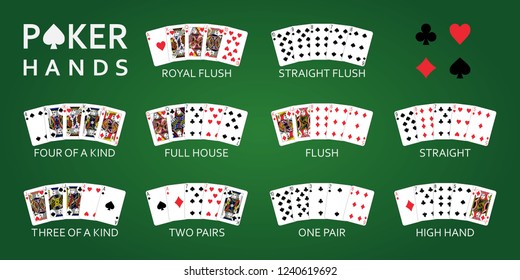
Poker is a game of skill, with a small element of chance. Betting intervals and ranges are important, as is analyzing opponents. In addition to the fundamentals, poker analysis should include player analysis. For example, it is important to understand the bluffing strategies of opponents. Then, you can make your own bluffs to improve your chances of winning.
Basic rules of poker
If you’ve ever played poker, you know that there are some basic rules that you must follow. These guidelines are universal in nature and are based on common sense and good etiquette. Poker is a game of skill, and following these guidelines will help you increase your chances of winning. To begin, you must make an initial contribution to the pot. This initial bet is called the ante.
You should always try to be courteous when dealing with other players. You’ll probably be spending hours on end with the same opponents, so treating them well is essential. Also, being polite can help you extract monetary value from your opponents. You’ll want to be polite even if you’re winning the pot.
You can raise or call a bet depending on the limits of the game. When raising, you must have enough money to cover the previous bet. If you’re not confident in your hand, you can fold your hand. In this case, the previous bet remains in the pot. The second player may raise, but cannot re-raise.
Hand rankings
Learning poker hand rankings is an essential skill to improve your chances of winning. There are several important factors to consider when determining a hand value. These factors include the player’s starting seat, the type of cards he has, and the game he’s playing. Although these rankings shouldn’t be memorized, they will help you increase your odds of winning by helping you understand the best way to play each hand.
The highest-ranking hand is a straight. The lowest-ranking hand is a pair of twos. While both pairs are strong, it’s still important to understand that the higher pair is more valuable. If you have two pairs, you’re more likely to beat a low pair.
The lowest-ranking hand is the smallest hand in the game, which is also the best starting hand. This hand is known as a high-card hand. It’s a strong starting hand and wins against overcards the majority of the time. However, it’s a weaker hand than pocket jacks. Some enthusiasts even consider the Ace of Hearts and Spade the strongest starting hand. These two cards are dealt only once in every 221 hands and are considered a 4:1 favorite to win almost any hand.
Betting intervals
Betting intervals in poker games vary widely and can be critical to winning the game. Betting intervals determine how much each player can raise, which in turn determines who will win a hand. They also help players determine how much to stack and bet each hand. This article discusses the different types of betting intervals and how to use them to maximize your odds of winning the pot.
The betting intervals in a poker game are different for each game type. However, the basic rules of the game are the same. Each player in the game contributes a certain amount to the pot, usually a nickel or other low value chip. When all of the active players have placed their bets, there is a showdown. The person with the most chips remaining in the pot wins the hand.
The betting intervals in a poker game will vary depending on the number of players and the type of game being played. Normally, the first player to act places a bet, and the players to their left must then raise their bet proportionately. This cycle will repeat itself until only one player remains. In some games, there is no betting interval at all.